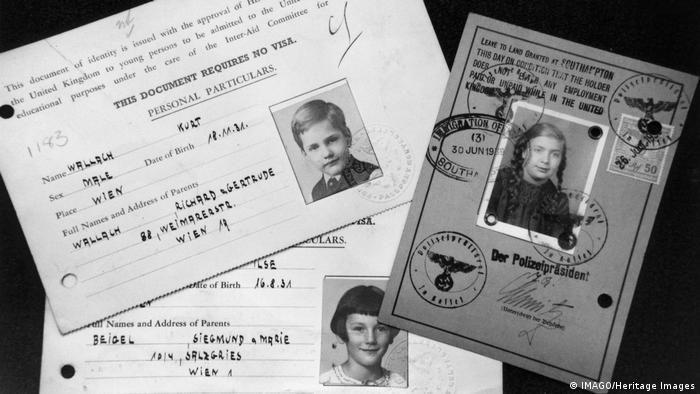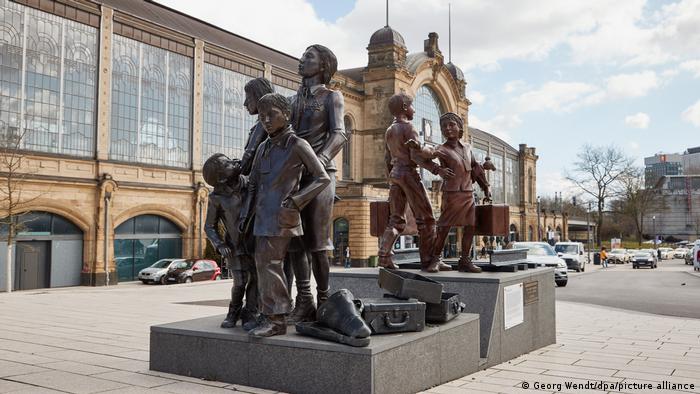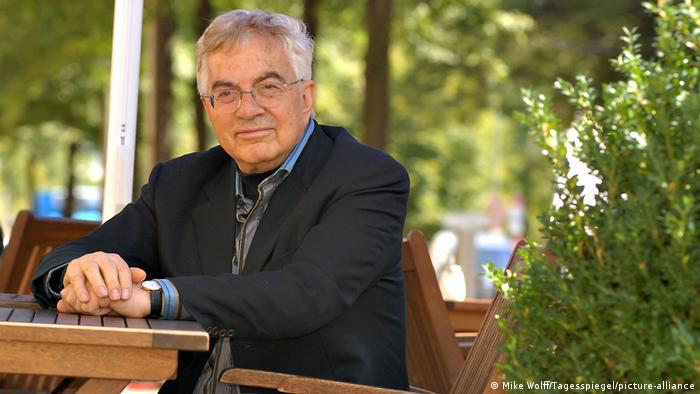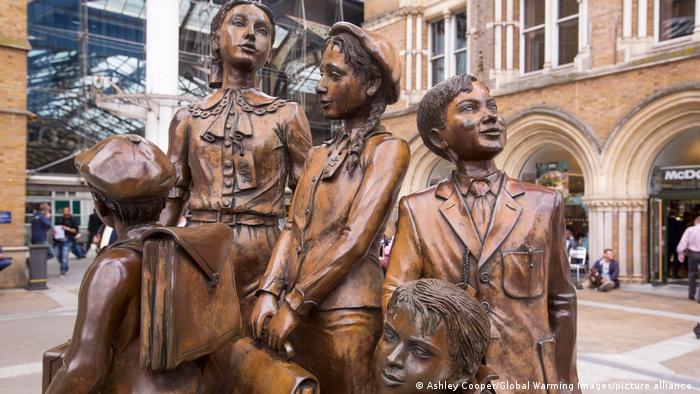Between 1938 and 1939 an extensive rescue operation of mostly Jewish children from the National Socialists was successful. Around 10,000 found shelter. Many paid a heavy price: they lost their families forever.

The children were sent on their journey with provisional documents
Two children on one side, a woman with four other children on the other – separated by a deep chasm. One of the children stretches out his hand, but the others cannot see it. You have turned away. Two versus four. Very few children survived. One of the central statements of the monument “Kindertransport – The Last Farewell”.

The monument “Kindertransport – The Last Farewell” was created by the artist Frank Meisler
It is located at the south exit of Hamburg-Dammtor station and is dedicated to the mostly Jewish children who, thanks to numerous children's transports to Great Britain, escaped Nazi persecution between 1938 and 1939 – and survived. King Charles III paid a visit to the memorial together with his wife Camilla during his trip to Germany.
The first Kindertransport left Berlin on December 1, 1938. A day later, the approximately 200 children arrived in Harwich, UK. They came from a Jewish orphanage that was destroyed during the November pogroms. They were followed by around 10,000 mostly Jewish children who were rescued in this way until 1940. The oldest were 17 years old, the youngest only a few months. The Kindertransporte officially ended on September 1, 1939 with the German invasion of Poland and the beginning of the Second World War. A last transport left the Netherlands for Great Britain on May 14, 1940. He saved the lives of around 80 children who had previously fled the “German Reich”.
Trigger Reichspogromnacht
The trigger for the Kindertransporte was the Reichsprogromnacht on the night of November 9th, 1938. Thousands of Jewish shops and synagogues were destroyed at the time, and people were arrested, killed or taken to concentration camps. The unbridled anti-Semitic violence prompted Jewish organizations in particular, but also a few Christian organizations, to step up their rescue efforts. They asked Britain to take in persecuted children. It was a time when many countries had already tightened their entry requirements for Jewish refugees and restricted escape options.
The British government agreed to allow Jewish children and young people up to the age of 17 to enter the country, provided they can pay for the journey themselves. In Great Britain, the children should be placed with family members, in foster families or in boarding schools.
In 1938, the British Prime Minister Lord Baldwin appealed to the humanity of the English population: “I ask you to help the victims of this catastrophe , which is not a natural disaster […] but an outburst of inhumanity by humans against their fellow humans.”
For the 10,000 rescued children, rescue meant survival. But most of them never saw their parents, aunts, grandparents, siblings who stayed behind in the “German Reich” or in the conquered countries of Europe again.
Sculptors of survivors themselves
One who a not only understand such a fate, but lived through it himself, is the artist himself who created the sculpture in Hamburg.

Frank Meisler (here a photo from 2008) died in Jaffa in 2018
< p>Frank Meisler, born in Danzig in 1925 and died in Israel in 2018, left the Free City of Danzig in one of the last Kindertransports at the end of August 1939. Just a few days later, the National Socialists invaded Poland; Meisler's parents were murdered in Auschwitz.
When he was rescued, Meisler, like most children, arrived at Liverpool Street Station in London. Meisler also set up a sculpture reminiscent of the children's transports.

In London at Liverpool Street station in London, a sculpture also commemorates the children who found shelter here
Meisler traced the path of the Kindertransporte with his sculptures across Europe: in Rotterdam, in Berlin, in Gdansk, in London and Hamburg, his monuments commemorate the rescued children.
Today, the survivors are either dead or very old. In 2019, the 80th anniversary of the Kindertransport, some survivors came to Berlin. Including Ralph Mollerick. In 1938 he reached Great Britain and later emigrated to the USA. In 1942 he learned that his parents had been murdered in the Holocaust. For a long time, Mollerick told DW at the time, the trauma of being abandoned and the vain hope that his parents would follow him accompanied him. At the time he always thought his parents would come, but they never did. “They couldn't.”